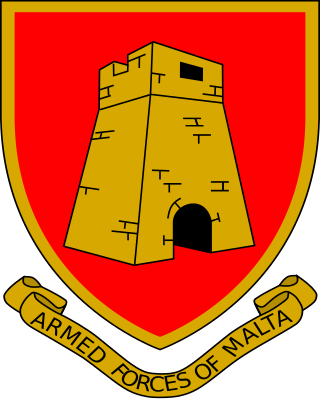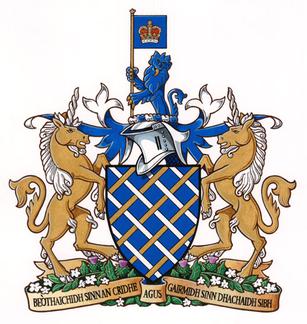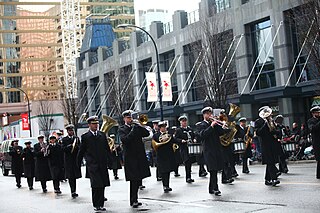Canadian Forces Base Borden, formerly RCAF Station Borden, is a large Canadian Forces base located in Ontario. The historic birthplace of the Royal Canadian Air Force, CFB Borden is home to the largest training wing in the Canadian Armed Forces. The base is run by Canadian Forces Support Training Group (CFSTG) and reports to the Canadian Defence Academy (CDA) in Kingston.

The Canadian Centennial was a yearlong celebration held in 1967 to celebrate the 100th anniversary of Canadian Confederation. Celebrations in Canada occurred throughout the year but culminated on Dominion Day, July 1, 1967. Commemorative coins were minted, that were different from typical issues with animals on each — the cent, for instance, had a dove on its reverse. Communities and organizations across Canada were encouraged to engage in Centennial projects to celebrate the anniversary. The projects ranged from special one-time events to local improvement projects, such as the construction of municipal arenas and parks. The Centennial Flame was also added to Parliament Hill. Children born in 1967 were declared Centennial babies.

The Armed Forces of Malta is the name given to the combined armed services of Malta. The AFM is a brigade sized organisation consisting of a headquarters and three separate battalions, with minimal air and naval forces. Since Malta is the guardian of the European Union's most southerly border, the AFM has an active role in border control.

The Canadian Guards was an infantry regiment of the Canadian Army that served in the same role as the five regiments of foot guards in the British Army. The regiment was formed on 16 October 1953, by Lieutenant-General Guy Simonds, the Chief of the General Staff of the Canadian Army, with the redesignation of four separate battalions:

The Royal Nova Scotia International Tattoo is a show inspired by Military Tattoos given by military bands and display teams. It has taken place annually in Nova Scotia's capital, Halifax since 1979. It is currently held in the Halifax Scotiabank Centre.

A military tattoo is a performance of music or display of armed forces in general. The term comes from the early 17th-century Dutch phrase doe den tap toe, a signal sounded by drummers or trumpeters to instruct innkeepers near military garrisons to stop serving beer and for soldiers to return to their barracks and is unrelated to the Tahitian origins of an ink tattoo.

The Royal Canadian Ordnance Corps was an administrative corps of the Canadian Army. The Royal Canadian Ordnance Corps RCOC can trace its roots back to the Canadian Stores Department. Formed in 1871, the Canadian Stores Department was a civil department of the Canadian Government. This civil service was charged with control of forts, ammunition, stores, buildings and an ordnance depot left by the departing British Military.
Canadian Forces Base Picton was a military installation located in Picton, Ontario. The base was active from the Second World War to 1969 and served the Royal Air Force, Royal Canadian Air Force and Canadian Army. Today, the site functions as the Picton Airport.

Canadian Forces Base Chilliwack was a Canadian Forces base located in Chilliwack, British Columbia.

The Royal Canadian Artillery Band is one of six Regular Force bands in the Canadian Armed Forces. Located at Canadian Forces Base Edmonton, the RCA Band provides music designed to support Canadian Forces operations, foster morale and esprit de corps, and promote Canada and the Canadian military nationally and abroad. The band operates mainly in western Canada and is de facto the representative band of the Canadian Army in the western provinces. All unit members are professional musicians in addition to being members of the military, which enables the band to adopt a variety of configurations to suit the musical needs of their audiences. Ensembles can range from jazz combos, rock bands, and chamber groups, through stage and show bands to full marching and concert bands.

Canadian military bands are a group of personnel in the Canadian Armed Forces (CAF) that performs musical duties for military functions. Military bands form a part of the Music Branch of the CAF, composed of six full-time professional Regular Force bands, 15 Regular Force voluntary bands, and 53 part-time reserve force bands. Bands of the Music Branch are often badged with the unit or Canadian Forces base insignia that they support.
Colonel Ian Simon Fraser is a leading producer of large-scale military tattoos and events in Canada and overseas.
The following is a hierarchical outline for the Canadian Armed Forces at the end of the Cold War. It is intended to convey the connections and relationships between units and formations.

The Royal 22e Régiment Band is the regimental band of the Royal 22nd Regiment. It is based at CFB Valcartier in Quebec and is assigned to the 2nd Canadian Division Support Group. It is the only French-speaking regular military band in Canada.

The Stadacona Band of the Royal Canadian Navy is a Canadian military band in the Royal Canadian Navy based in Halifax. It serves as official military band of the Maritime Forces Atlantic Command (MARLANT). It is one of six regular force military bands in the Canadian Forces. It provides musical accompaniment for ceremonial requirements of the East Coast Navy. The Stadacona Band usually performs at the Halifax dockyard to take part in the welcoming naval vessels. For over 75 years, the band's performances have been seen members of the Royal Family, the Governor General of Canada, the Prime Minister of Canada, foreign heads of state, and Canadian naval officials. The band has provided music for all graduation activities in the area.

Princess Patricia's Canadian Light Infantry Band was the former brass and reed regimental band of the Princess Patricia's Canadian Light Infantry regiment of the Canadian Army. It was maintained by the regiment from 1919–1994 at CFB Calgary.

The Naden Band of the Royal Canadian Navy is one of six regular force military bands of the Canadian Forces. The Royal Canadian Navy band is based at CFB Esquimalt in Esquimalt, British Columbia that serves as the official musical unit of the Canadian Forces Maritime Forces Pacific Command (MARPAC).
The Band of the Royal Canadian Corps of Signals was a regimental military band in Canada based out of Canadian Forces Base Kingston in Ontario. It is a voluntary band, which means that its band members are not composed of full-time professional musicians. The band provided musical support for the community in the Kingston, Ontario metropolitan area as well as Ottawa–Gatineau.
The Band of the Royal Canadian Engineers was a Canadian Army military band that served briefly for 15 years from 1953 to 1968. During its entire existence, it was based in Chilliwack, British Columbia. It was the premier band in the RCE, having precedence over other small unit bands such as the Band of the 48th Squadron. It was established at the Royal Canadian School of Military Engineering and primarily recruited from a mix of Canadian nationals as well as musicians from the United Kingdom, the Netherlands and Hungary. It has performed for members of the Canadian royal family as well as Governors General of Canada. In September 1964, the band performed during the arrival of U.S. President Lyndon B. Johnson in Vancouver for the Columbia River Treaty ceremonies. 1967 marked a busy schedule for the band. In this year, it performed during Expo 67, the Seattle Armed Forces Pageant, and the Centennial Grand Military Tattoo. Due to a mass reorganisation of Canadian military bands across the military services that came as a result of the Canadian Forces unification, the band was dissolved in 1968. It was lastly directed by Captain Leonard Camplin, who began his service with the band in 1961.

Navy bands in Canada are part of the Royal Canadian Navy's command structure and overseen by the Music Branch of the Canadian Forces and the Directorate of History and Heritage of the Department of National Defence.













